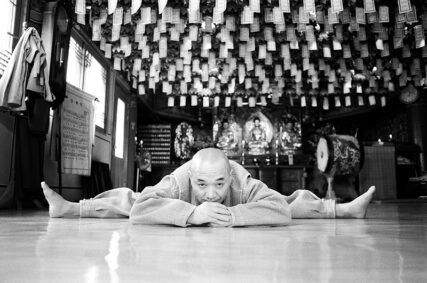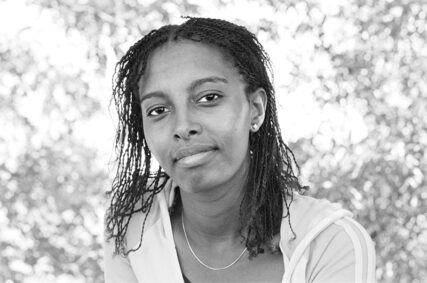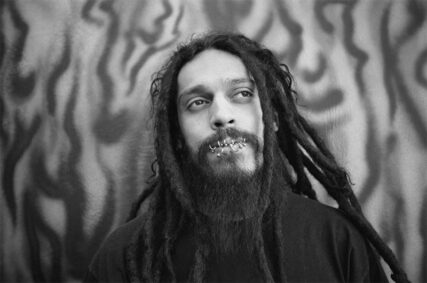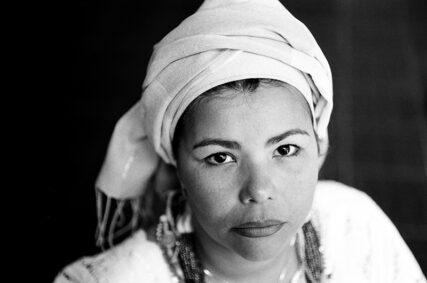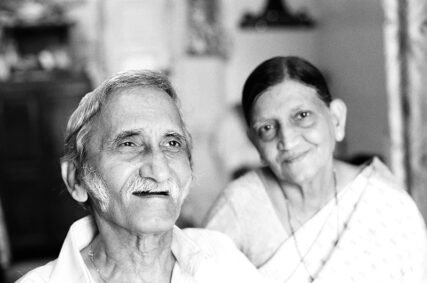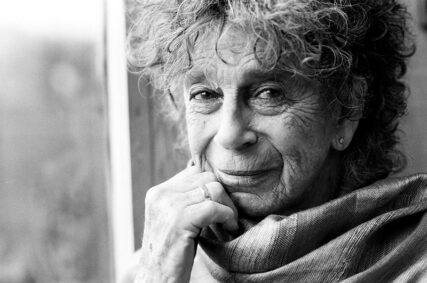(RNS) — A chance encounter with a church janitor helped change the course of Daniel Epstein’s life.
Epstein, then a marketing director for Procter & Gamble, was in Maine for a photography workshop and went out to take portraits of people in the community. He decided to stop by local churches to see if he could photograph the ministers.
But there was no minister at the first church he stopped at, only the janitor.
“I kept saying to him, I’m looking for the minister,” he said. “Finally, I realized, God put the janitor in front of me.”
That portrait of a church janitor in Maine was the first of more than 500 Epstein has collected over the past 20 years. What was first a hobby became a passion project and a spiritual journey of “holy listening” for Epstein, one that took him from Rockport, Maine, to Mutitjulu, Australia.
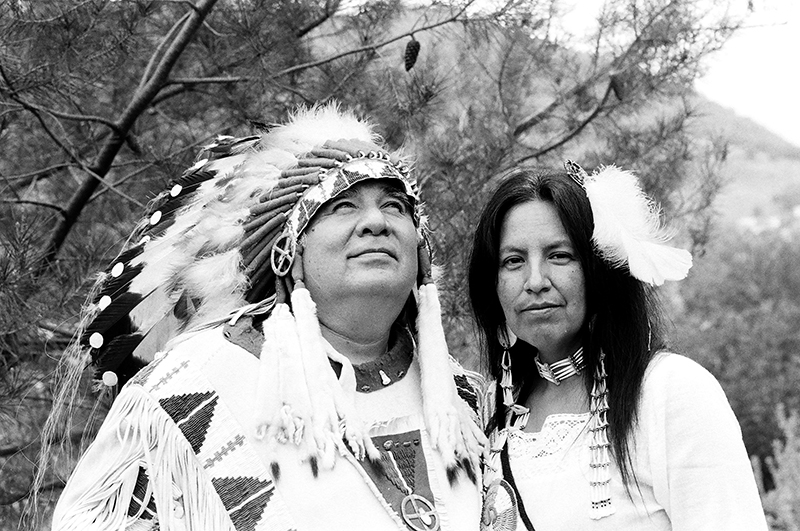
Loren Zephier and Sharron Campbell. Photo by Daniel Epstein
A selection of his portraits is now on display as part of an exhibit called “Seeing the Other,” at the University of Chicago Laboratory Schools. The exhibit opened in January and runs through March 7. Many of his portraits are also posted online at Epstein’s “Portraits in Faith” website and in a coffee table book published in 2021.
Epstein, who grew up Jewish in Atlanta, said in an interview that he’d always had an interest in interfaith work, and that played a role in the project. His subjects ranged from Catholic priest and author Richard Rohr and Reiki healer Allison Ledbetter in Nashville to Sheikh Abdul Aziz Bukhari in Jerusalem and the late Aboriginal leader and songwriter Uncle Bob Randall in Australia.
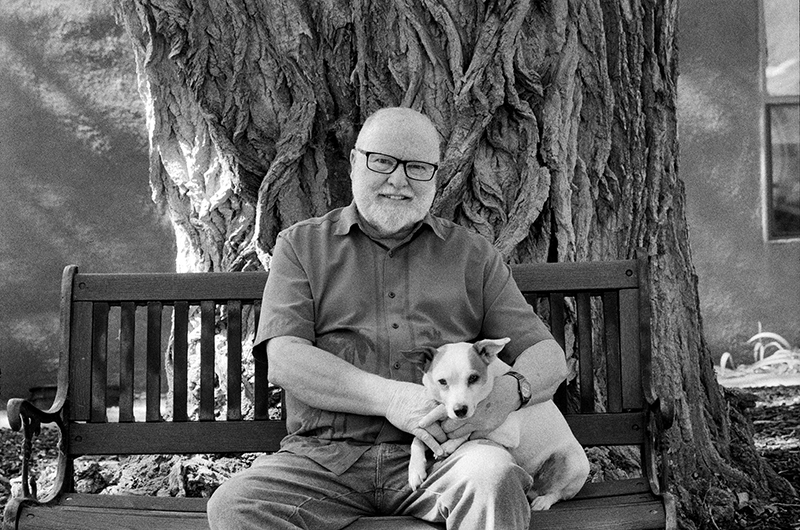
Richard Rohr. Photo by Daniel Epstein
Randall, who died in 2015, told Epstein about being taken away from his family as a child and being placed in an institution for Aboriginal children run by Methodists. It was there, Randall told Epstein, that he encountered the teachings of Jesus in a red-letter Bible.
“You could go straight into those words — they made more sense to me than what the missionaries were talking about,” said Randall, in a video interview posted at Portraits in Faith. Randall would eventually see some similarities between those words of Jesus and Aboriginal beliefs, though he saw few Christians living them out. He also told Epstein about seeing all creation as holy.
Sheikh Abdul Aziz Bukhari told Epstein about traveling to the United States as a young man and living a life that was far from faith. That changed, he said, after a near-death experience that followed a heart attack.
- Yoon Yong Sang. Photo by Daniel Epstein
- Yael Ruvel. Photo by Daniel Epstein
Many of the portraits were taken when Epstein traveled the world in his role at Procter & Gamble. He’d add personal days onto the end of trips and find subjects with the help of friends and other contacts. Along with taking portraits, Epstein would interview his subjects about their spiritual journey, focusing more on the experience of faith rather than on doctrine or the specifics of theology.
The conversations were guided with questions like, “Tell me about your earliest memory of faith,” “What was the first time in your life you felt like you had to, or chose to, rely upon God?” and “What are you most grateful for?”
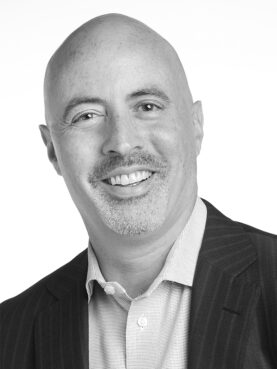
Photographer Daniel Epstein. Courtesy photo
Epstein, who has always loved taking photographs and talking with people, said the project fit his interests.
“It’s really been a combination of all the things I love in my life,” he said. “It’s a much more interesting way to travel around the world than to go around the marketplace taking pictures of spices.”
When he started working on “Portraits in Faith,” Epstein described himself as “miserable.” He said he was too self-absorbed and involved in unhealthy relationships. There was not much gratitude in his life.
“I once had a psychiatrist in Boston describe me as a young man who was not happy about much,” he said.
Listening to other people’s journeys of faith helped changed that. Many of the people he met were grateful for their lives, something that was foreign to him. That gratitude began to rub off on him, he said. The more time he spent listening to other people’s stories, the more healing he experienced.
“I like to say that the guy working on this project was the best version of me,” he said.
- Davi da Silva. Photo by Daniel Epstein
- Eliana Ferreira Costa Paircao. Photo by Daniel Epstein
Gina Alicea, director of Corvus Gallery, which is hosting the exhibit, and an art teacher at the Laboratory School, said Epstein’s portraits and his ideas about listening to other people’s journeys drew her to his work. That work, she said, is especially meaningful at a divisive time in America’s history.
“I thought that this would be a poignant moment to bring this to the University of Chicago and share this with our students,” she said. “And have them ponder that question of how can we as a community listen to each other and bring a deeper understanding of each other?”
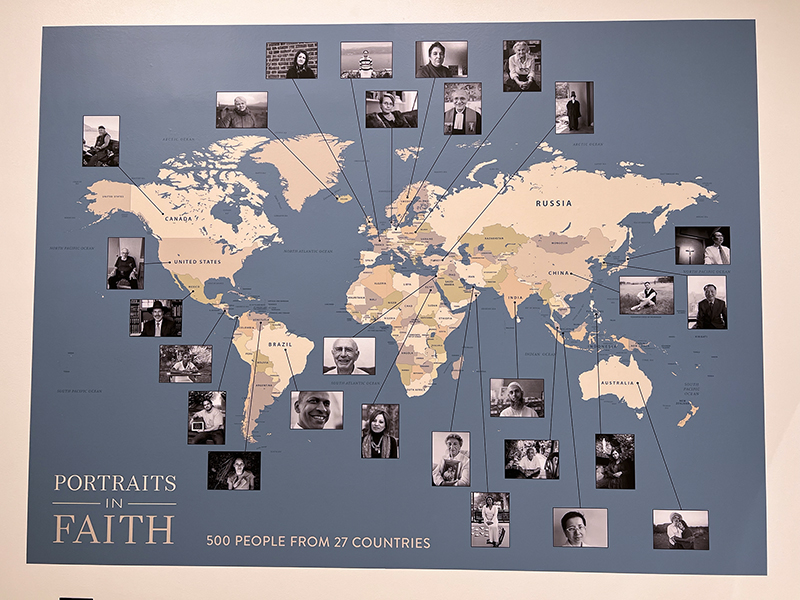
The “Seeing the Other” exhibit at the University of Chicago Laboratory Schools highlights a selection of Daniel Epstein’s photographs. Courtesy photo
Early on in the project, Epstein, who now lives in Cincinnati, said he thought the point of the project was to give people a chance to tell their stories. Now, he said, he’s come to see the project as an act of “sacred listening,” where he can give his full attention to another person’s story.
“It became what I call my sacred errand, which I’m so grateful that I’ve been sent on,” he said. “I don’t even feel like the project belongs to me. I feel like I’ve just been assigned to it.”
- Samson Korlekar. Photo by Daniel Epstein
- Anna Halprin. Photo by Daniel Epstein



